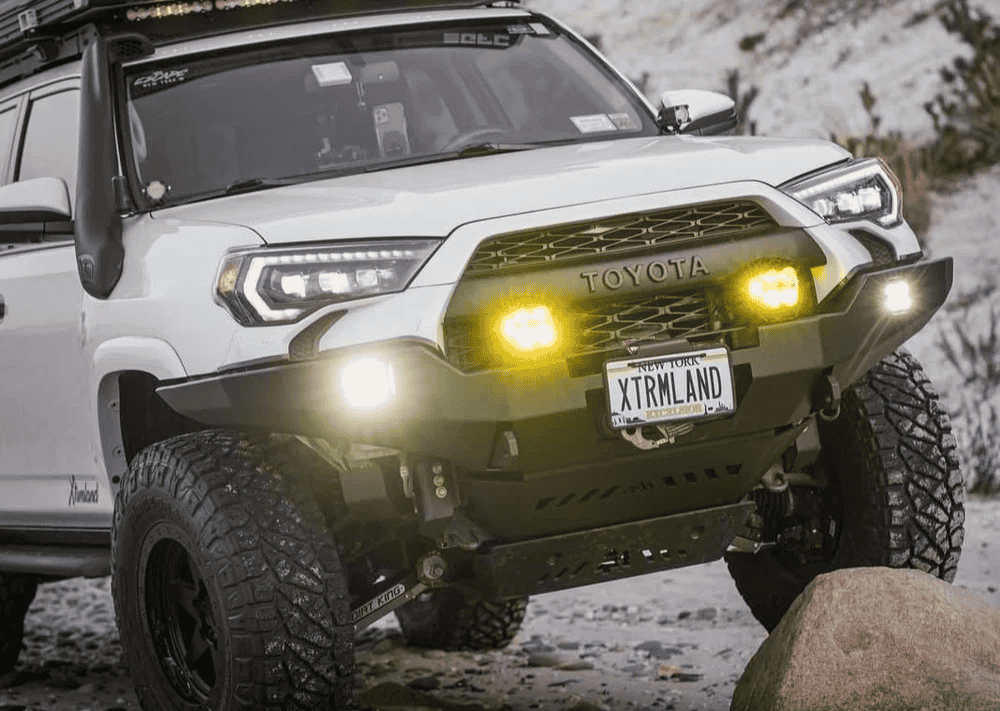Overland Vehicles

A long range adventure vehicle is more than a big tank and knobby tires. True range blends efficiency, energy storage, and the stamina of the driver. Start with realistic consumption numbers at the speeds and terrains you expect. Plan fuel stops or charging windows with a buffer for headwinds, grades, detours, and idle time. The farther you go from services, the more disciplined your energy math must be.
Terrain and load change everything. Soft sand, fresh snow, mud, and steep climbs all raise consumption. Larger tires, roof gear, and cross winds do too. Aim for the simplest path to efficiency first: tire pressures matched to terrain, smooth throttle inputs, and clean aerodynamics. After that, extended tanks or jerry can provisions, or higher output alternators for house batteries, add practical range without overcomplication.
Gas and diesel remain the most serviceable options in remote areas, with diesel offering better energy density and engine braking in many platforms. Hybrids can reduce idle consumption and support onboard power. EVs excel where fast charging networks exist and excel further with efficient tires, smart speed management, and route planning that accounts for grade and temperature. Whatever you drive, align energy storage with your real world pace, not a perfect day.
If you are going to stack long miles, think like an endurance athlete. Seating posture, cabin noise, airflow, and lighting affect how long you can drive safely. A quiet cabin reduces fatigue. Blackout solutions and a firm, breathable sleep surface help you recover quickly. Keep cook gear intuitive so you can eat well with minimal fuss in bad weather.
Off grid living hinges on dependable power and water. Lithium batteries paired with a quality battery management system and alternator charging keep fridges, heaters, and comms alive on cloudy days. Solar is a useful supplement, not a guarantee. For water, combine a reliably mounted tank with filtration or purification so you can top up from mixed sources.
Size your battery for the worst stretch you expect: cold nights with cabin heat, hot days with fans, or long work sessions if you are remote working. Use a shunt based monitor so you always know state of charge. On the water side, track daily use per person, insulate lines in cold, and install easy drain points. A simple, robust system beats a gadget heavy setup that is hard to diagnose on the trail.
Weight is the hidden tax on range and handling. Every add on should earn its place. Know your chassis ratings, then weigh the rig loaded with people, fuel, water, bikes, and spares. Balance front to rear, keep heavy items low and between the axles, and avoid roof clutter. Brakes and cooling systems deserve attention when weight climbs.
Recovery and safety gear are your insurance policy. Carry a properly rated recovery strap, soft shackles, a tire repair kit, a compressor, and traction boards. A reliable jack and base plate matter in sand or snow. Pair that with first aid, fire suppression, and a paper map backup for when electronics fail. Training and practice turn gear into solutions.
Build a packing plan and stick to it. Weigh bins, label them, and secure everything. Set tire pressures for the actual axle loads and terrain. Replace worn tires early; long trips magnify small problems. Before each day, perform a quick walkaround for leaks, loose fasteners, and abnormal tire wear. Small rituals prevent big delays.
Modern navigation is phenomenal, but redundancy wins. Run offline maps, a satellite communicator, and a second device with the route cached. In cold or heat, store electronics where they will not throttle performance. For field service, carry a scan tool, common fuses, belt, filters, and fluids that match your platform. A small tool roll, thread locker, and self fusing tape solve many roadside issues.
The goal is confidence, not clutter. A long-range adventure vehicle should feel calm at highway speed, sure footed on broken tracks, and simple to live with in camp. When the systems are intuitive and the weight is disciplined, the miles stack up easily.
If you are ready to turn these principles into a build, a seasoned team can translate your route plan, payload, and climate into a coherent rig. OZK Customs designs and upfits long range vans and overland trucks with a clear focus on efficiency, reliability, and comfort. See what is possible on our Explore overland rigs page, or dive into tailored options on Custom overland upfit. Curious about our process and client experience? Learn more at Why choose OZK Customs.
We build to the way you travel. Tell us your longest stretch without services, your crew size, and the surfaces you drive most. From power systems and water planning to suspension and storage, we blueprint a vehicle that carries you farther with less strain, so the trip feels as good as the destination.
Ready to build for real distance and comfort? Tell us how you travel and we will architect a purpose built rig that goes farther, rides better, and works every day. Share your vision and get a tailored plan with pricing.
ADDRESS:
6159 E Huntsville Rd, Fayetteville, AR 72701
PHONE:
(479) 326-9200
EMAIL:
info@ozkvans.com